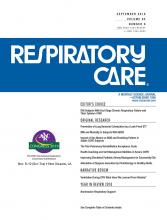Abstract
BACKGROUND: Pediatric airway management is a challenging process at community emergency departments (CEDs) due to lower pediatric volume, a lack of pediatric expertise among staff, and a lack of pediatric-specific equipment and resources. This has contributed to increased mortality in pediatric patients presenting to CEDs in comparison to pediatric academic medical centers (AMCs). We hypothesized that a collaborative program between CEDs and the state AMC would improve the quality of pediatric airway management provided by CEDs in simulated settings and the CEDs' pediatric emergency readiness scores.
METHODS: This prospective, pre- and post-intervention study utilized in situ simulation and was conducted in 10 CEDs in the state of Indiana. A team from the pediatric AMC led a multi-faceted improvement program, which included post-simulation debriefing, addressing pediatric airway management issues, targeted assessment reports, access to pediatric resources, and ongoing communication with the AMC. The primary outcome of the study was improvement of simulated pediatric airway management in the CEDs. The secondary outcome was improvement of the CEDs' pediatric emergency readiness scores score.
RESULTS: A total of 35 multidisciplinary teams participated in pre-intervention sessions, and 40 teams participated in post-intervention sessions. Overall adherence to a critical action checklist improved from 52% at the pre-intervention visits to 71% post-intervention (P = .003). There were significant improvements in the use of appropriate endotracheal tube (ETT) size (from 67% to 100%, P = .02), cuffed ETT (from 8% to 71%, P < .001), appropriate blade size (from 58% to 100%, P = .03), and availability of suction catheter (from 10% to 42%, P = .049). The CEDs' total pediatric emergency readiness scores score improved from 58.8 ± 15.6 pre-intervention to 75.8 ± 9.3 post-intervention (P = .01).
CONCLUSIONS: A collaborative improvement program between a pediatric AMC and CEDs improved the CEDs' simulated pediatric emergency airway management. This model can be utilized to improve management of other pediatric critical conditions in these CEDs.
- high-fidelity simulation training
- pediatric emergency medicine
- airway management
- intubation
- interprofessional
- multidisciplinary
- community hospitals
- community outreach
Footnotes
- Correspondence: Samer Abu-Sultaneh MD, Department of Pediatrics, Division of Pediatric Critical Care, Indiana University School of Medicine and Riley Hospital for Children at Indiana University Health, 705 Riley Hospital Dr., Riley Phase 2 Room 4900, Indianapolis, Indiana 46202. E-mail: sultaneh{at}iu.edu.
Dr Abulebda presented a version of this paper at the International Meeting on Simulation in Healthcare 2018, held January 13–17, 2018, in Los Angeles, California.
The authors have disclosed financial support from Indiana University and from the Indiana University School of Medicine Department of Pediatrics. Mr Whitfill has disclosed a relationship with 410 Medical. The other authors have disclosed no conflicts of interest.
Supplementary material related to this paper is available at http://www.rcjournal.com.
- Copyright © 2019 by Daedalus Enterprises







